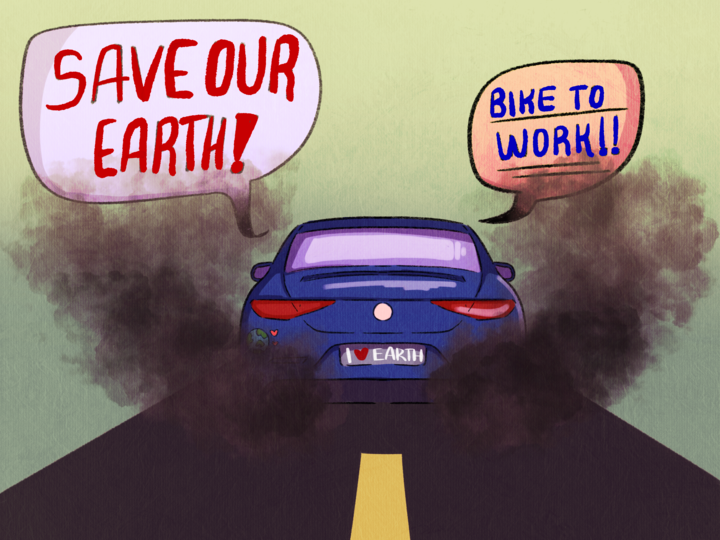In recent weeks, international news media have highlighted the humanitarian crisis in the Mediterranean Sea, where it is estimated that over 1,800 migrants from Africa and the Middle East have drowned this year trying to reach Europe, and in southeast Asia, where the governments of Thailand, Indonesia and Malaysia have left boatloads of Muslim Rohingya refugees from Myanmar stranded at sea without food or water. While these international situations are tragic and certainly demand attention, they should also serve to remind us of the humanitarian crisis affecting migrants in our own backyard.
On May 11, the Arizona Department of Public Safety announced that the body of a suspected undocumented migrant had been discovered about 30 miles east of Tucson. This tragedy is only the most recent example of a disturbing trend that has been unfolding for over a decade. Each year since 2004, an average of 195 suspected undocumented migrants have been found deceased in Arizona’s Sonoran Desert. In the early 1990s, by contrast, that number was about 10. According to the UA’s Binational Migration Institute, this sharp increase in fatalities is the direct result of recent changes to border enforcement strategy.
In 1994, the United States attorney general announced a new border enforcement strategy focusing on “prevention through deterrence.” The new policies spurred an unprecedented militarization of the U.S. border, and a massive expansion of Border Patrol’s budget. The explicitly stated goal of the new strategy is to focus border surveillance on the most frequently used land crossings — mostly urban areas such as San Diego, Nogales and El Paso — forcing migrants to choose more desolate, hostile routes such as the mountains and deserts of Arizona.
The argument was that if illegally crossing the border became more dangerous, and more expensive, then less people would try crossing the border unlawfully in the first place. Whatever the goals of the policy, the increased militarization of the U.S. border has coincided with the rise of migrant deaths in the Southwest.
When human remains are found in southern Arizona, they are sent to the Pima County Medical Examiner’s Office, where forensic anthropologists and other specialists attempt to identify the body and determine the cause of death. While they succeed in most cases, the task often proves to be impossible: When human bodies are exposed to Arizona’s intense heat over a period of time, they rapidly degrade. As a result, the cause of death cannot be determined 48 percent of the time. When the cause of death can be identified, the forensic teams can help us understand the grim reality affecting migrants on their perilous journey.
According to the Binational Migration Institute, from 2006 to 2013, at least 37 percent of deceased migrants found in the Sonoran desert died of exposure, the leading cause of death affecting border crossers, which includes heat stroke, dehydration and hyperthermia — unsurprising given our harsh climate. Migrants walk days or weeks trying to circumvent border enforcement. It is virtually impossible to carry enough water for such a journey. Beside exposure, many migrants fall victim to motor vehicle accidents (7 percent), homicide (4 percent) and heart attacks.
The humanitarian crisis in southern Arizona is not limited to those who die trying to cross the border; those who survive often pay a tremendous price, as well. Severe dehydration leaves many migrants with permanent kidney damage, while others sustain serious injuries trying to cross dangerous routes. As the border becomes more militarized and crossing becomes more difficult, migrants are increasingly relying on coyotes: drug-cartel syndicates who are known to rob their clients and abandon them in the desert. Women crossing the border are particularly vulnerable to sexual assault from coyotes or other migrants. The problem is so severe that many women take contraceptives with them.
The massive loss of human life and other social costs sustained by undocumented migrants in Arizona represent a clear and severe humanitarian crisis. While immigration officials refuse to budge on the “prevention through deterrence” model, border patrol has taken some steps to reduce migrant deaths. Most notably, the creation of the Border Patrol Search, Trauma, and Rescue Unit: a unit of specially trained Border Patrol agents who carry out search and rescue missions to aid stranded migrants who call to turn themselves in. Border Patrol has also installed rescue beacons throughout the desert Southwest, which allow stranded migrants to push a button and call for help. While initiatives such as BORSTAR and the rescue beacons have undoubtedly led to the rescue of hundreds of migrants seeking help, migrant deaths only increased in the years following their implementation. A number of non-profit organizations also provide aid to stranded migrants, such as Tucson-based agency No More Deaths.
No matter your opinions on immigration, our current enforcement policies are creating a humanitarian crisis, and there is little evidence to support the belief that these policies have reduced the flow of undocumented migrants entering the country. If Americans believe in the value of human life, they must demand border policy reform to end these unnecessary deaths. The migrants dying in Arizona are human beings with loved ones on both sides of the border.








